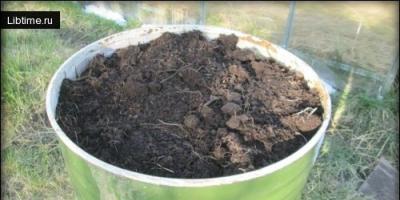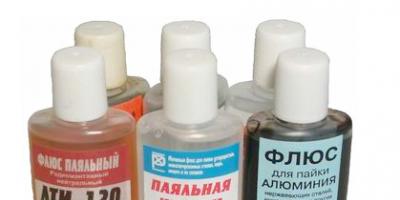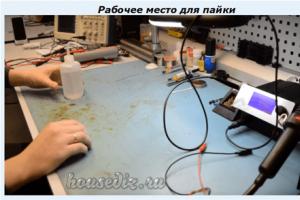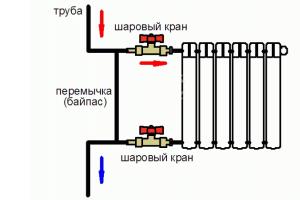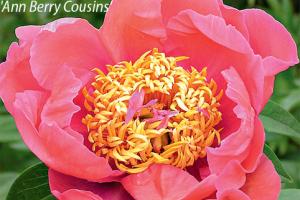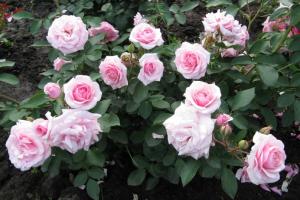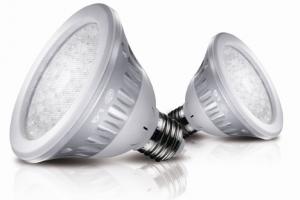How to make ranunculus from foamiran
Delicate foamiran ranunculus can decorate any bouquet Many people know the beautiful ranunculus flower, from which chic bouquets are created. There are many varieties of this flower, and each has its own flavor. There are ranunculi, similar to peonies, and there is an Asian variety of the flower. By and large, each flower needs its own template, its own pattern, and therefore its own master class.
Asian ranunculus from foamiran: MK
Asian ranunculus is a delicate, beautiful, and not very difficult flower to make. If you have already worked with foamiran (or, as it is otherwise called, plastic suede), then you know about its properties and methods of forming petals. If you have never worked with the material before, practice. The fact is that making a flower is a delicate job, and in this matter you need at least basic skills in working with the material.
To make Asian ranunculus you will need:
- Olive and white foam;
- Pastel lemon, light pink, olive, pink;
- Sponge for shading;
- Second glue;
- Foil;
- Scissors;
- Wire;
- Hairpin, elastic band or blank for a brooch.
 Asian ranunculus from foamiran is made quite simply
Asian ranunculus from foamiran is made quite simply
Next, you need to print out the finished patterns or draw them yourself. Hints can be found in the photo gallery. Usually there are three types of petal templates, the parts for each template will be from 11 to 21 pieces. You will also need a sepal pattern.
Patterns: ranunculus from foamiran
If you made the patterns yourself, and when assembling the flower, the flower turned out just right, be sure to save these patterns for subsequent work. Or successfully printed patterns from the Internet - save them too, so as not to complicate your work in the future. Patterns need to be transferred to the material - either tracing with a toothpick or an empty (non-writing) ballpoint pen will help with this.
According to the pattern, petals are cut out from white plastic suede and sepals from olive suede. After this, the petals cut out according to the first pattern need to be tinted with olive oil pastels. Tint on both sides, blending well.
 Necessary elements for foamiran ranunculus
Necessary elements for foamiran ranunculus
The petals made according to the second and third patterns are tinted on both sides with lemon pastel. And the petals, made according to the 4th pattern, are tinted on both sides with pale pink pastel. The largest petals are tinted with pink pastel.
After tinting, the petals are heated on an iron (temperature mode - silk-wool), after which it would be a good idea to treat them with bulk. A ball is formed from a piece of foil and threaded onto a wire. A ball of foil is wrapped in lemon foam.
Beauty from foamiran: ranunculus flower, formation
And then, when each part is heated and formed, you can form the flower. Make sure not a single petal is left unattended. Since foamiran easily remembers the shape that your fingers give it, be careful when working.
- First, take the smallest olive-colored petals and paste them over the base - so the petals are glued so that the base is slightly visible;
- The petals are glued overlapping one half of the petal;
- After this, the petals of the second template are glued with a downward shift of 2 mm, also overlapping;
- The petals of the third template are glued 2 mm lower, glue is applied to the first petal on one side, 7 petals are glued in one row, the last petal is placed under the first;
- The next row of petals of the third template - and these are 8 more petals, are glued at the same level as the first row of petals of the third template, and this is glued with an overlap of 1 cm;
- The petals of the fourth template are also glued in two rows - 10 petals are glued in one row, 11 petals in the second row;
- The petals are aligned along the edge; it is better to apply glue to the tips of the petals;
- The petals of the fifth template are glued at the very bottom, a total of 7 petals are glued, after which the rest are glued between the petals of the previous row with a shift of 2 mm, with a minimum overlap.
 The process of forming a ranunculus flower from foamiran
The process of forming a ranunculus flower from foamiran
After this, the sepals are glued. The glue is applied to the very middle, and there is no need to glue the rays. The flower is ready, all that remains is to choose a mount and fix the flower on it. This could be an elastic band, a hairpin, a brooch or a blank for a headband.
Persian rununculus from foamiran: master class
You will need the same materials. The color of foamiran is at your discretion. Usually you take white foamiran and olive and pink oil pastels.
It will be easy to make the pattern yourself. In this case, these will not be individual petals, but petal circles. You will need four types of circles - 2 pieces of type A (the largest), 2 pieces of type B, 4 pieces of type C, 8 pieces of type D (the smallest). You will need a leaf template, according to which 3 parts will be cut out, and 3 sepals.
 Persian ranunculus made from foamiran looks very impressive
Persian ranunculus made from foamiran looks very impressive
Progress:
- Cut out the petal circles, make all the details (and even the leaves) from white foamiran, as well as the sepals;
- Then the petal circles are tinted - small petal circles with olive pastels, large petal circles with pink oil pastels;
- The leaves are tinted with olive and green pastels;
- All petal circles are processed in the same way - they are heated on an iron at the “silk-wool” temperature, each petal is processed with a boule;
- The sepals are heated on an iron, rubbed between the fingers, then straightened;
- Well, then the familiar scheme - a ball of foil and wire;
- The base is treated with olive foamiran;
- The petal circles are gradually glued, starting with the greenest and smallest.
Then the sepals are glued and the wire is treated with tape. Litons are glued to the leaves. Litons are also covered with tape, this is how the twig is assembled.
We cut out drop-shaped patterns from cardboard in four sizes
Using foamiran patterns, we cut out the ranunculus petals. For each size we choose a separate color. We trace the pattern on the shape not with a pencil, but with nail scissors, so that there are no traces left. Then we cut it out.

We place each petal one by one on a hot iron for a few seconds and, while it is warm, with our thumbs we stretch it from the middle to the edges, making it convex.

We do the same with all the petals. Now our petals resemble boats.

From yellow foamiran we cut out a small strip for the center of the flower. We cut one of its long edges into noodles. Take a bunch of white stamens and hot glue a yellow stripe with noodles around it in a circle. Next we attach the first layer of the smallest petals (yellow).




Now we glue another layer of slightly larger petals - beige.

The next layer is even larger petals (light lilac). We glue them in such a way that each subsequent one overlaps the previous one a little.


The last layer is the largest purple petals.


You can make your ranunculus look fuller by gluing several layers of large and medium petals.
From a satin ribbon we cut out a pointed leaf and a rosette for a flower. To prevent their edges from sticking out, we burn them with a lighter or candle. We do not bring the sheet too close to the flame, because delicate fabric is very easy to simply burn. If you do not have experience making fabric flowers and leaves using the flame-firing method, you may want to use ready-made leaves, which can be purchased at a craft store. We glue the rosette to the base of the flower, and the leaf to the stem-wire on which the berry is attached.


We weave the wire stems of berries and stamens with the stem of the flower, you get a bouquet like this.


Now we twist all the stems into a ring and attach them with hot glue to the metal base for the brooch.


The product is ready to become a wonderful addition to a fashionable look, because ranunculus flowers have a very beautiful bud structure and color. They have become very popular among artists, jewelers and designers, providing inspiration for the creation of wonderful paintings, exquisite clothing and jewelry.
Ranunculus - a very beautiful flower from which chic large bouquets are collected. There are many varieties of ranunculus. We will try to make an Asian ranunculus from foamiran, then an African (turban-shaped) one similar to a peony from foamiran, and we will finish this large master class with a sprig of Persian ranunculus from foamiran. Ranunculus is often used to create wedding compositions; you can also use it to create interesting brooches and hair decorations.


Asian ranunculus from foamiran: step-by-step master class and pattern
To create an Asian ranunculus you will need:
- white, olive foamiran;
- oil pastels lemon, olive, light pink and pink and a sponge for shading;
- iron;
- second glue;
- foil;
- Bulka;
- scissors;
- wire No. 28-30;
- elastic band, hairpin or brooch holder.
Ranunculus pattern from foamiran

MK: assembly of Asian ranunculus
According to the pattern, we cut out the petals for our ranunculus from white foamiran and the sepals from olive. Then we tint the petals number 1 with olive oil pastels on both sides, blending them well. Petals No. 2-3 are also tinted on both sides with lemon color. We tint the petals for No. 4 completely on both sides with pale pink pastel. And we tint the largest petals with pink pastels.

After tinting, we heat the petals on an iron at silk-wool temperature and treat them with bulk.

Petals number 4 are also heated on an iron at silk-wool temperature and treated with bulk.

We heat petals No. 5 on an iron at silk-wool temperature, then fold them like an accordion, rub them between our fingers, straighten and stretch them, and make a depression just above the middle of the petal.

Sepals on the iron at silk-wool temperature and each petal separately. Then fold the petal in half and stretch it out a little so that the tips point down.

Take a piece of 10*14 foil and form a ball for the base of the ranunculus and make a hole in the ball, glue in a wire or insert a toothpick for easy flower formation.

Take a piece of lemon or olive foamiran and wrap it around a foil ball. Since the ball will be almost entirely covered with petals, it’s okay if there are folds when processing the ball.

First, take the smallest olive-colored petals and glue the base. We glue the petals so that the base is slightly visible. Glue the petals overlapping half of the petal. Then, with a downward shift of 2 mm, we glue petals No. 2, also overlapping.

We begin to glue petals No. 3 at the bottom by 2 mm, apply glue to the first petal on one side, glue 7 petals in one row and place the last petal under the first. Glue the petals overlapping. The next row of petals No. 3 - 8 petals, glue on the same level as the first row of petals No. 3, overlap with glue by 1 cm.

Petals No. 4 are also glued in 2 rows - 1 row with glue - 10 petals and 2 rows of petals No. 4 - 11 petals. Align the petals along the edge, apply glue to the tip of the petals.

We glue petals No. 5 at the very bottom, glue 7 petals. Then the rest between the petals of the previous row with a shift of 2 mm with minimal overlap.

Then we glue the sepals, apply glue in the middle, do not glue the rays of the petals.

This is the brooch with ranunculus we got.

This is the African ranunculus that I suggest you do in this master class.
To create such a flower you will need:
- red, green foamiran;
- red and blue acrylic paint and shading sponge;
- iron;
- second glue;
- foil;
- Bulka;
- scissors;
- wire No. 28-30.

From red foamiran we cut out squares for three flowers. Sizes of squares 2* 2 cm - 21 pcs., 2.5*2.5 cm - 24 pcs., 3*3 cm - 18 pcs., 3.5* 3 cm - 23 pcs.

From the prepared squares we cut out petals in the form of droplets.
To assemble the flowers we will need:
large open flower
- 2*2 cm – 7 pcs.
- 2.5*2.5 cm – 8 pcs.
- 3*3 cm – 6 pcs.
- 3.5*3 cm – 18 pcs.
average beginning to bloom
- 2*2 cm -7 pcs.,
- 2.5*2.5 cm – 8 pcs.
- 3*3 cm – 6 pcs.
- 3.5*3 cm – 5 pcs.
for ranunculus bud
- 2*2 cm -7 pcs.,
- 2.5*2.5 cm – 8 pcs.
- 3*3 cm – 6 pcs.

Since I don't have purple paint, I mix red and blue acrylic paint and start tinting the petals. I tint all the petals equally on both sides, and we also tint the end of the petals. Then we heat all the petals on a silk-wool iron and treat them with bulk.

We take a piece of foil 7*14 and form a ball for the base of the ranunculus and make a hole in the ball and glue the wire on it after making a loop.

Take a piece of red foamiran 4*4 cm and fit the foil balls.

And we begin to glue the first row, covering the base, it should be visible just a little. There are 7 petals in the first row. Glue the petals overlapping. Having glued all the petals, we scroll the workpiece over the lighter, the petals bend down a little.

The next row has 8 petals. Having glued all the petals, we also scroll the workpiece over the lighter, the petals bend down a little.

We glue the next row of 6 petals in a checkerboard pattern and also hold them over the lighter. Our bud is ready.

For the middle flower, glue 5 large petals and close the circle. And for the blossoming ranunculus, we glue 2 more rows of large petals, one row of 7 petals and another row of 6 petals. Each time we close the circle. When the flowers are collected, we process them over a lighter.

We cut out sepals from green foamiran. Take a piece of 4*4 cm. Fold it in half twice and cut out a drop; when we unfold it, we get a sepal like this. We rub it between our fingers and glue it to the collected flowers.

We cut out leaves from green foamiran; they look like peony leaves only smaller. We rub them between our fingers and straighten them with a stick, we can apply texture and glue the litons.

We collect the twig, fastening each flower together and the leaf with tape.
This is how the African ranunculus flower turned out.
Persian ranunculus from foamiran: step-by-step master class

Photo of Persian ranunculus.
To create a Persian ranunculus you will need:
- white foamiran;
- pink, olive oil pastel and blending sponge;
- iron;
- Bulka;
- second glue;
- foil;
- scissors;
- wire No. 28-30.
Persian ranunculus pattern

Step-by-step photo of assembling a ranunculus flower
According to the pattern, we cut out the petal circles; I cut out all the details from white foamiran, even the leaves and sepals. Then I will tint everything, but as you wish.

The petal circles are ready.

We tint all the small petal circles “G” with olive oil pastel on both sides completely and the end too.

We tint the large petal circles “A” and “B” with pink oil pastels.

We tint the petal circles “B” with 2 completely pink, one completely olive and one petal pink, and the end of the petal circle with olive.

Using a stick, apply texture to the leaves and tint with olive and green oil pastels. Add a little pink.

We process all the petal circles in the same way, heat them on an iron at a silk-wool temperature and treat each petal with bulk.

Heat the sepals on an iron and rub them between your fingers. Then we straighten it.

We process the leaves with a lighter, giving waviness and liveliness to the leaves.

We take 10*14 cm foil and form the bases for the flowers in the form of balls and glue them to the wire.

We treat the base with olive foamiran.

We put a small petal circle on the base and begin to paste over the bases. The base should be slightly visible. We pre-cut the petals from all petal circles. Glue through one petal.

So we glue the second petal circle “G”.

Glue one petal circle “B”.

Glue the sepals, the bud is ready.

So we collect the base for two more flowers.

Then we attach and glue a pink petal circle with a green end “B” to the assembled base.

Then the petal circle “B” is all pink. The unblown ranculus is ready.

Glue the sepals.

We collect the blossoming ranunculus.

Glue the pink petals “B”.

Then petal circles “A” and “B”. Don’t forget to glue the petal circles in a checkerboard pattern.

The flower is ready.

We glue the sepals and treat the wire with tape.

Glue the litons to the leaves.

We begin to process the litons with tape and collect the twig.
These are the ranunculi we made from foamiran at the master class.
You can diversify your flower arrangements using flowers made from foamiran. Those who are already familiar with this material know about all its advantages, those who are hearing about it for the first time can read about it and purchase it in the “Foamiran” section.
However, you can make a great variety of beautiful and unusual flowers from foamiran, and in this master class I will focus on the ranunculus flower or garden buttercup, which I immediately fell in love with for its airiness, lightness and the ability to combine several tasty and bright colors in it at once. This type of flower can easily be used to decorate headbands, boutonnieres, bracelets, brooches and much more. This flower was used in my work comb "Ranunculus".
We will need the following materials and tools:
- Foamiran of any two colors;
- Two types of scissors;
- Base for a flower on a stem;
- Leaf template, two sizes;
- Glue gun;
- Bulka;
- Iron.
Description and procedure for creating a brooch.
|
1) We put everything unnecessary aside and leave only foamiran of the same color, two templates for the petals and two pairs of scissors. |
 |
|
2) We cut blanks for our future leaves from foamiran. The size of a small leaf is 2.5 by 2 cm. We need 4 of these light lemon-colored leaves. The second size is 3 by 2 cm. We need 12 of these leaves. |
 |
|
3) We take small leaves and begin to form uneven edges on each leaf. |
 |
|
4) We do this with all leaves of two sizes. |
 |
|
5) We take bright yellow foamiran and cut out 4 small petals and 6 large petals from it. We process the edges, making them uneven. |
 |
|
6) Let's start the second part of our master class on ranunculus from foamiran. Take an iron and a 1 cm ball. |
 |
|
7) We take one petal and apply it to a heated iron for a few seconds so that the leaf absorbs the heat and becomes more flexible. |
 |
|
8) We take the loaf, place the petal on the palm of our hand and begin to press the center and edges of the petal. All this must be done very quickly, before our leaf has time to cool down. |
 |
|
9) It turns out this concave petal, which is very similar to the real one. |
 |
|
10) We do the same thing with all the leaves of two colors and two sizes. |
 |
|
11) The third part of the master class is the formation of a ranunculus bud from foamiran. We take all our petals, a glue gun and the center for the flower. |
 |
|
12) Apply glue to the tip of the petal and glue it to the base of our future flower. |
 |
|
13) So we glue all 4 small petals of light lemon color. We already have a small bud. |
 |
|
14) We take 4 bright yellow petals and glue them to our bud so that the petals are staggered in relation to the first row. |
 |
 |
|
|
16) Now glue the remaining 12 large petals of light lemon color. |
 |
|
17) We got a cute, lush, two-color ranunculus bud. |
 |
You can decorate the flower with leaves, which we learned to make in the master class"
A delicate ranunculus made from foamiran can decorate any bouquet. Many people know the beautiful ranunculus flower, from which chic bouquets are created. There are many varieties of this flower, and each has its own flavor. There are ranunculi, similar to peonies, and there is an Asian variety of the flower. By and large, each flower needs its own template, its own pattern, and therefore its own master class.
Asian ranunculus is a delicate, beautiful, and not very difficult flower to make. If you have already worked with foamiran (or, as it is otherwise called, plastic suede), then you know about its properties and methods of forming petals. If you have never worked with the material before, practice. The fact is that making a flower is a delicate job, and in this matter you need at least basic skills in working with the material.
To make Asian ranunculus you will need:
- Olive and white foam;
- Pastel lemon, light pink, olive, pink;
- Sponge for shading;
- Second glue;
- Foil;
- Scissors;
- Wire;
- Hairpin, elastic band or blank for a brooch.
 Asian ranunculus from foamiran is made quite simply
Asian ranunculus from foamiran is made quite simply
Next, you need to print out the finished patterns or draw them yourself. Hints can be found in the photo gallery. Usually there are three types of petal templates, the parts for each template will be from 11 to 21 pieces. You will also need a sepal pattern.
If you made the patterns yourself, and when assembling the flower, the flower turned out just right, be sure to save these patterns for subsequent work. Or successfully printed patterns from the Internet - save them too, so as not to complicate your work in the future. Patterns need to be transferred to the material - either tracing with a toothpick or an empty (non-writing) ballpoint pen will help with this.
According to the pattern, petals are cut out from white plastic suede and sepals from olive suede. After this, the petals cut out according to the first pattern need to be tinted with olive oil pastels. Tint on both sides, blending well.
 Necessary elements for foamiran ranunculus
Necessary elements for foamiran ranunculus
The petals made according to the second and third patterns are tinted on both sides with lemon pastel. And the petals, made according to the 4th pattern, are tinted on both sides with pale pink pastel. The largest petals are tinted with pink pastel.
After tinting, the petals are heated on an iron (temperature mode - silk-wool), after which it would be a good idea to treat them with bulk. A ball is formed from a piece of foil and threaded onto a wire. A ball of foil is wrapped in lemon foam.
Beauty from foamiran: ranunculus flower, formation
And then, when each part is heated and formed, you can form the flower. Make sure not a single petal is left unattended. Since foamiran easily remembers the shape that your fingers give it, be careful when working.
- First, take the smallest olive-colored petals and paste them over the base - so the petals are glued so that the base is slightly visible;
- The petals are glued overlapping one half of the petal;
- After this, the petals of the second template are glued with a downward shift of 2 mm, also overlapping;
- The petals of the third template are glued 2 mm lower, glue is applied to the first petal on one side, 7 petals are glued in one row, the last petal is placed under the first;
- The next row of petals of the third template - and these are 8 more petals, are glued at the same level as the first row of petals of the third template, and this is glued with an overlap of 1 cm;
- The petals of the fourth template are also glued in two rows - 10 petals are glued in one row, 11 petals in the second row;
- The petals are aligned along the edge; it is better to apply glue to the tips of the petals;
- The petals of the fifth template are glued at the very bottom, a total of 7 petals are glued, after which the rest are glued between the petals of the previous row with a shift of 2 mm, with a minimum overlap.
 The process of forming a ranunculus flower from foamiran
The process of forming a ranunculus flower from foamiran
After this, the sepals are glued. The glue is applied to the very middle, and there is no need to glue the rays. The flower is ready, all that remains is to choose a mount and fix the flower on it. This could be an elastic band, a hairpin, a brooch or a blank for a headband.
You will need the same materials. The color of foamiran is at your discretion. Usually you take white foamiran and olive and pink oil pastels.
It will be easy to make the pattern yourself. In this case, these will not be individual petals, but petal circles. You will need four types of circles - 2 pieces of type A (the largest), 2 pieces of type B, 4 pieces of type C, 8 pieces of type D (the smallest). You will need a leaf template, according to which 3 parts will be cut out, and 3 sepals.
 Persian ranunculus made from foamiran looks very impressive
Persian ranunculus made from foamiran looks very impressive
- Cut out the petal circles, make all the details (and even the leaves) from white foamiran, as well as the sepals;
- Then the petal circles are tinted - small petal circles with olive pastels, large petal circles with pink oil pastels;
- The leaves are tinted with olive and green pastels;
- All petal circles are processed in the same way - they are heated on an iron at the “silk-wool” temperature, each petal is processed with a boule;
- The sepals are heated on an iron, rubbed between the fingers, then straightened;
- Well, then the familiar scheme - a ball of foil and wire;
- The base is treated with olive foamiran;
- The petal circles are gradually glued, starting with the greenest and smallest.
Then the sepals are glued and the wire is treated with tape. Litons are glued to the leaves. Litons are also covered with tape, this is how the twig is assembled.
These beautiful ranunculi are made from inexpensive and accessible foamiran material. Artistic acrylic paints are sometimes used instead of pastels. In any case, the work requires accuracy and diligence.


